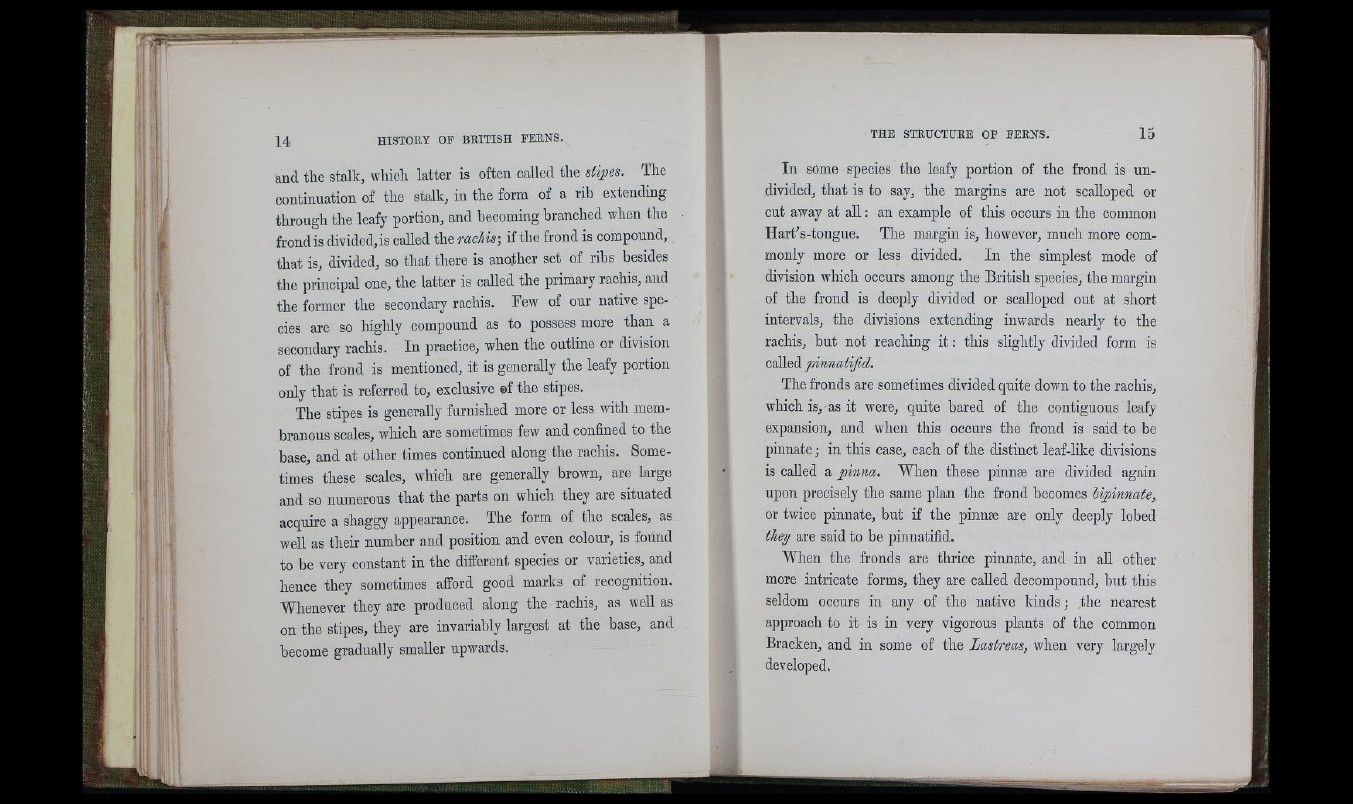
14 HISTORY OP BRITISH PERNS.
and the stalk, which latter is often called the stipes. The
continuation of the stalk, in the form of a rib extending
through the leafy portion, and becoming branched when the
frond is divided,is called the racMs-, if the frond is compound,
that is, divided, so that there is another set of ribs besides
the principal one, the latter is called the primary rachis, and
the former the secondary rachis. Tew of onr native species
are so highly compound as to possess more than a
secondary rachis. In practice, when the outline or division
of the frond is mentioned, it is generally the leafy portion
only that is referred to, exclusive ef the stipes.
The stipes is generally furnished more or less with membranous
scales, which are sometimes few and confined to the
base, and at other times continued along the rachis. Sometimes
these scales, which are generally brown, are large
and so numerous that the parts on which they are situated
acquire a shaggy appearance. The form of the scales, as
well as their number and position and even colour, is found
to be very constant in the different species or varieties, and
hence they sometimes afford good marks of recognition.
Whenever they are produced along the rachis, as well as
on the stipes, they are invariably largest at the base, and
become gradually smaller upwards.
In some species the leafy portion of the frond is undivided,
that is to say, the margins are not scalloped or
cut away at a ll: an example of this occurs in the common
Hart’s-tongue. The margin is, however, much more commonly
more or less divided. In the simplest mode of
division which occurs among the British species, the margin
of the frond is deeply divided or scalloped out at short
intervals, the divisions extending inwards nearly to the
rachis, but not reaching i t : this slightly divided form is
called pinnatifid.
The fronds are sometimes divided quite down to the rachis,
which is, as it were, quite bared of the contiguous leafy
expansion, and when this occurs the frond is said to be
pinnate; in this case, each of the distinct leaf-like divisions
is called a pinna. When these pinnae are divided again
upon precisely the same plan the frond becomes iipinnate,
or twice pinnate, but if the pinnae are only deeply lobed
they are said to be pinnatifid.
When the fronds are thrice pinnate, and in all other
more intricate forms, they are called decompound, but this
seldom occurs in any of the native kinds; the nearest
approach to it is in very vigorous plants of the common
Bracken, and in some of the Lastreas, when very largely
developed.